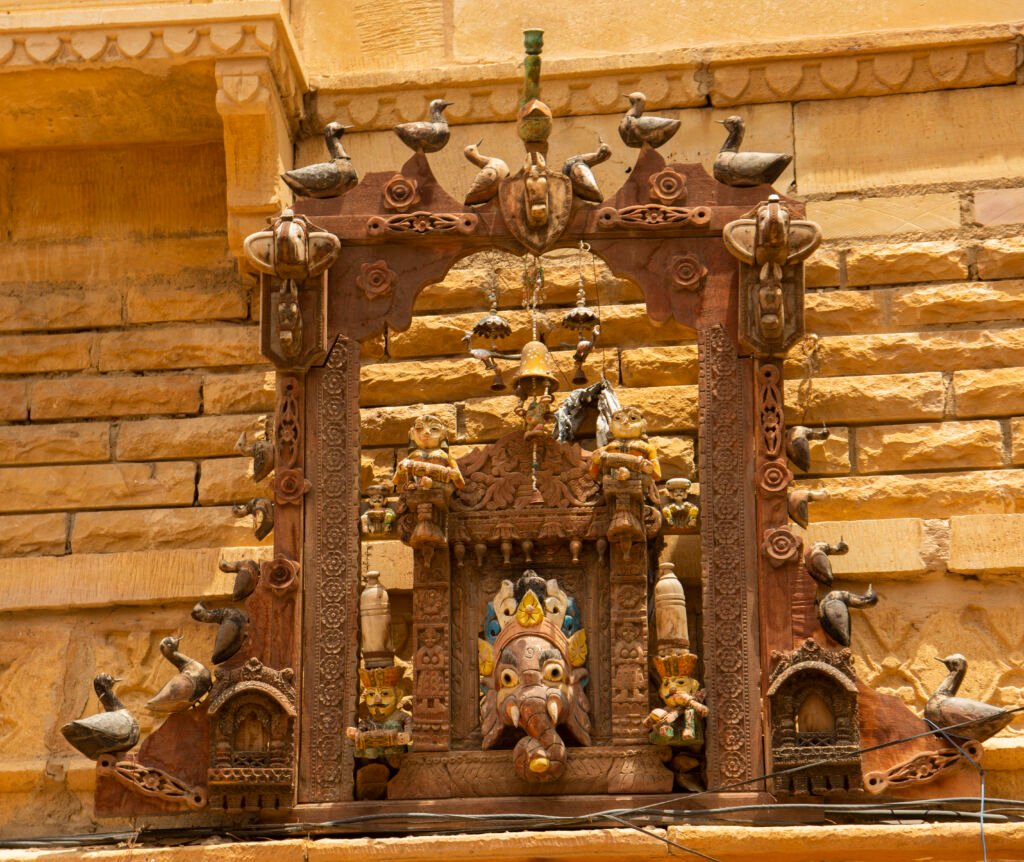
“Transform your home into a sanctuary of serenity with a mandir design that reflects your soul’s true essence.”
The Ultimate Guide to Mandir Design for Home: Elevate Your Sacred Space
When it comes to creating a serene and spiritual environment in your home, the design of your mandir plays a pivotal role. A well-thought-out mandir design for home not only enhances the aesthetic appeal of your living space but also fosters a tranquil atmosphere for daily worship. In this comprehensive guide, we will delve into various aspects of mandir design for home, offering practical tips, design inspirations, and expert advice to help you create a sacred space that resonates with peace and spirituality.
Understanding the Importance of Mandir Design for Home
Before diving into design specifics, it’s crucial to understand why mandir design for home is so significant. A mandir, or home temple, serves as a personal sanctuary where you can connect with your spiritual self. The right design not only reflects your personal style but also contributes to the overall harmony and positive energy within your home. Therefore, a thoughtful mandir design is essential for creating a sacred space that aligns with your spiritual practices and lifestyle.

Key Considerations for Mandir Design for Home
1. Location and Placement
The location of your mandir is one of the most important aspects of its design. Ideally, a mandir should be placed in a quiet, serene part of the home where you can focus without distractions. Many people choose to position their mandir in the northeast corner of their home, as this direction is traditionally considered auspicious in Vastu Shastra, an ancient Indian architectural science.
Moreover, the placement should ensure that the mandir is easily accessible but not in the middle of high-traffic areas. If you have limited space, you can opt for a compact design that fits seamlessly into a corner or a small alcove.
2. Size and Scale
The size of your mandir should be proportional to the space available in your home. Whether you have a sprawling living area or a compact apartment, there are mandir design options that suit every space. For larger homes, you might consider a dedicated room or a more elaborate setup. On the other hand, for smaller spaces, wall-mounted mandirs or corner shelves can be a practical and aesthetically pleasing solution.
3. Material and Finish
The choice of materials and finishes for your mandir design plays a crucial role in setting the right mood. Traditional materials like wood, marble, and stone are commonly used in mandir designs due to their timeless appeal and durability. However, modern designs may incorporate materials like glass, metal, or even acrylic to create a sleek and contemporary look.
When selecting materials, consider their texture and color as well. Wooden mandirs often bring a warm, traditional feel, while marble or stone can add an element of grandeur and elegance. For a minimalist approach, you might opt for high-gloss finishes or neutral colors.
4. Design and Aesthetics
The design of your mandir should reflect your personal taste and the overall aesthetic of your home. You can choose from various design styles, including traditional, contemporary, or fusion. Traditional designs often feature intricate carvings, religious motifs, and vibrant colors, while contemporary designs may focus on clean lines, minimalism, and subtle colors.
Additionally, consider incorporating elements such as decorative lamps, intricate carvings, or artwork that complements the mandir’s design. These elements can enhance the visual appeal and create a more inviting atmosphere.
5. Lighting and Ambience
Proper lighting is essential in mandir design for home. Soft, ambient lighting creates a peaceful environment conducive to meditation and prayer. You might use recessed lighting, pendant lamps, or wall sconces to achieve the desired effect. Additionally, consider using dimmable lights to adjust the brightness according to the time of day and the mood you wish to set.
6. Storage and Organization
A well-organized mandir ensures that everything is in its place and easily accessible. Incorporate shelves, drawers, or cabinets to store religious books, offerings, and other items. This organization not only maintains the aesthetic appeal but also contributes to a clutter-free and calming space.

Mandir Design Inspirations for Different Home Sizes
1. Compact Spaces
For those with smaller homes or apartments, a space-efficient mandir design can make a significant difference. Consider a wall-mounted mandir or a compact corner unit. These designs can be both functional and visually appealing without taking up too much space.
2. Medium-Sized Homes
In a medium-sized home, you have more flexibility to experiment with different mandir designs. You could opt for a freestanding unit or a custom-built mandir that fits into a dedicated nook. Adding decorative elements like framed religious art or a small water feature can enhance the spiritual ambiance.
3. Large Homes
For larger homes, you might have the luxury of designing a more elaborate mandir. Consider a dedicated room with high ceilings, elegant carvings, and luxurious materials. A large mandir allows you to incorporate various elements like a prayer altar, seating arrangements, and even a small library of spiritual texts.
Practical Tips for Maintaining Your Mandir
To ensure that your mandir remains a pristine and sacred space, regular maintenance is essential. Here are a few tips:
- Cleaning: Regularly dust and clean the mandir area to maintain its shine and hygiene. Use mild cleaning agents to avoid damaging delicate surfaces.
- Decor: Refresh the decor periodically to keep the space inviting and engaging. This could include changing the flowers, updating religious icons, or adding new candles.
- Organization: Keep the mandir organized and clutter-free. Regularly check storage areas and ensure that everything is in its designated place.

Conclusion
Designing a mandir for your home is more than just an aesthetic endeavor; it’s about creating a sacred space that nurtures your spiritual well-being. By carefully considering factors such as location, size, material, and design, you can craft a mandir that not only enhances your home’s beauty but also provides a tranquil sanctuary for your spiritual practices.
Whether you opt for a traditional wooden mandir, a sleek modern design, or a space-saving solution, the right mandir design for home will transform your living space into a place of peace and reverence. Embrace these tips and inspirations to create a mandir that truly resonates with your personal and spiritual needs.https://seahawkarchplanners.com/

